How to Perfect Your Freestyle Hand Entry
Getting a stronger and more efficient freestyle is the goal of almost every swimmer. Who wouldn’t want to become even faster at swimming’s fastest stroke? When freestyle swimming, it’s all about perfecting those little nuances, such as your arm stroke and leg kick, if you want to keep up with the elite swimmers of the sport.
One of the most important parts of your freestyle stroke happens in the water, and this all begins with the way your hand enters the water’s surface. A good hand entry can lead to a good freestyle catch and freestyle pull. It’s the setup of the most labor-intensive and results-heavy phase of your freestyle technique.
In this article, we’ll use an experiment to find out if your freestyle hand entry needs improvement. We’ll also provide pointers and give you an idea of some of the most common mistakes that can affect your swim stroke. A perfect freestyle swim is a sum of its parts, and you really can improve your freestyle on every section of the stroke with different drills.
Is Your Freestyle Hand Entry on Point?
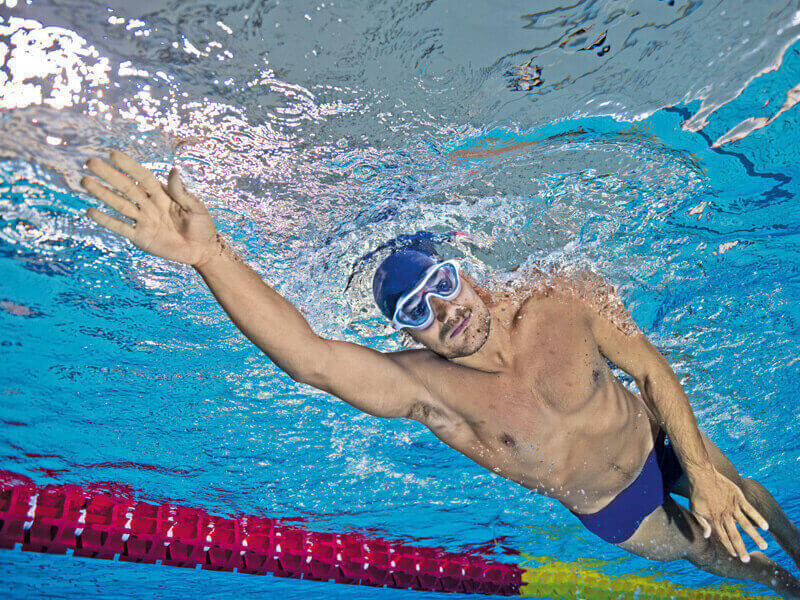
How many times have you been told, “Close your fingers. Otherwise, you won’t catch the water”?
Well, when you swim, you have to think of your hands as paddles. The larger and more compact the surface area, the greater the pulling force will be through the water. Sure, it doesn’t all depend on the hands, but these have an important role in the efficiency of the stroke.
To help you understand how the position of your fingers can vary the efficiency of your stroke, try out this simple experiment the next time you’re in the pool or open-water swimming.
Swim 25 meters (m) freestyle using the various swimming techniques described below. Keep track of the number of strokes needed for each lap. Make sure you get plenty of rest between sets and record your results.
- Swim 25 m with closed fists
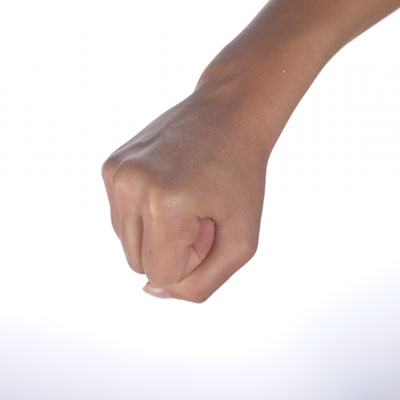
- Swim 25 m with your fingers completely spread out
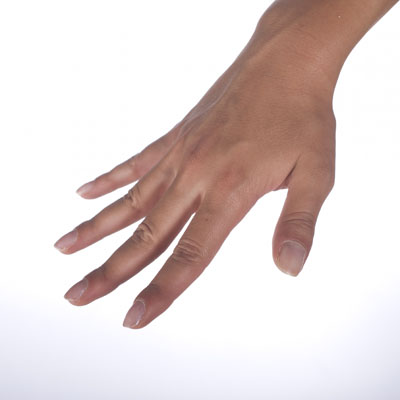
- Swim 25 m with closed fingers

- Swim 25 m leaving small gaps between your fingers and your hand slightly cupped

So, in which of the 25 meters did you take less strokes? If you swam according to the instructions that we gave you, the last lap, the one where your fingers were slightly spread, should be the one where you took less strokes. This is because your hand takes up a larger surface area compared to the other three during the push and pull.
How to Improve Your Freestyle Hand Entry
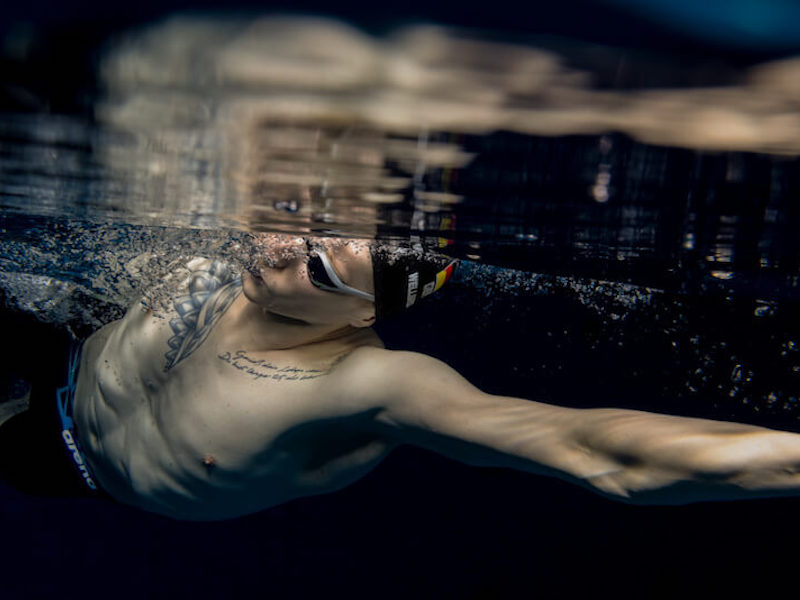
So now that you have a better understanding of what works to help improve your front crawl, here’s some advice on how to improve your freestyle hand entry to shave off those precious seconds.
Use Finger Paddles
Finger Paddles are a great tool because they reduce the load on your shoulders, allowing you to concentrate on the catch, traction, and pull.
To improve your freestyle stroke, wear Finger Paddles and try the “Zip-Up Freestyle technique”:
- Start by reaching your arms out together in front of you.
- Start your stroke with just one arm, paying attention to the traction and push phase.
- When your arm is stretched out beside your body, direct your attention to the recovery, remembering to keep a high elbow. Imagine it being a zipper closing the stroke you now have in front of you again.
Play With Surface Area
Next time you are in a car as a passenger (hopefully on your way to the pool) roll down the window and put your hand out, if it’s safe to do so. Play around with your hand, emulating every phase of the stroke — sticking out your little finger and so on. You’ll be able to get a good feel for surface area as the air pushes against your hand.
Try Sculling
Sculling is not only great to improve your hand entry, but it also works as a nice, steady warm-up before you swim freestyle. It’s a very low-impact movement that you can use in the water as part of your training regime.
- With your body in a horizontal position and your arms stretched out in front of you, make a circular motion with your hands, moving only your wrist and upper arm, as if to wave in the water.
- Keep your body flat, trying to reduce the friction with the water. You can even use a snorkel.
- Your legs should stay immobile, but until you feel comfortable, feel free to use them or a pull buoy as support.
Film Your Results
Finally, if you want to improve your hand position further, film yourself underwater while changing the position of your fingers and take notice of how it feels. You’ll see that with constant practice you’ll considerably improve the position of your fingers and thereby improve the efficiency of your stroke.
This is quite a commitment, but investing in an action cam like a GoPro and a suction mount will allow you to film underwater with no worries.
Hand Entry Mistakes You Must Avoid

There’s no point trying experiments and new techniques to get those freestyle gains you dreamed of if you then go on to make little mistakes that will compromise your stroke technique. Let’s take a look at the common mistakes swimmers make in their freestyle hand entry.
Relaxing Your Hands Soon After Entry
Every good swim coach knows that staying cognizant during the entirety of your swimming stroke is a tough yet important part of your training to master.
During the early stages of the arm recovery phase of your freestyle stroke, relaxing your hands is imperative. However, when your hand enters the water, if you keep it relaxed, it can lead to three potential problems: Your fingers can spread apart, your wrist can bend backward, or your whole hand can rotate sideways. All of these problems limit surface area and can even compromise body position.
Hitting Water Too Soon
We all know that water is a lot denser than air, therefore creating a lot more drag when it meets our bodies. But, when a lot of people are taught how to swim, they are told to slip their hands into the water with a bent elbow just above their heads and push them forward before beginning the pull motion. This may seem like a natural movement, but you are simply putting your hands and arms in the water for more time than they need to be there.
Keeping your body out of the water for longer will minimize drag and allow for a faster and more efficient stroke technique, a fully extended arm entering away from the head will serve you much better.
Swimming Zig-Zag Laps
Pool swimming isn’t NASCAR, every event involves moving from one side of the pool to the other in a straight line. Anything that compromises that is a threat to your front crawl. When performing the hand entry, if you overreach, your hand will end up in line with your head instead of your shoulder where it should be. This will create a battle between your left and right arms for direction and will cause you to wobble in the water.
Aim to keep your hands in line with your shoulders during your freestyle hand entry to keep your body position in a straight line.
Be Mindful of Your Movement
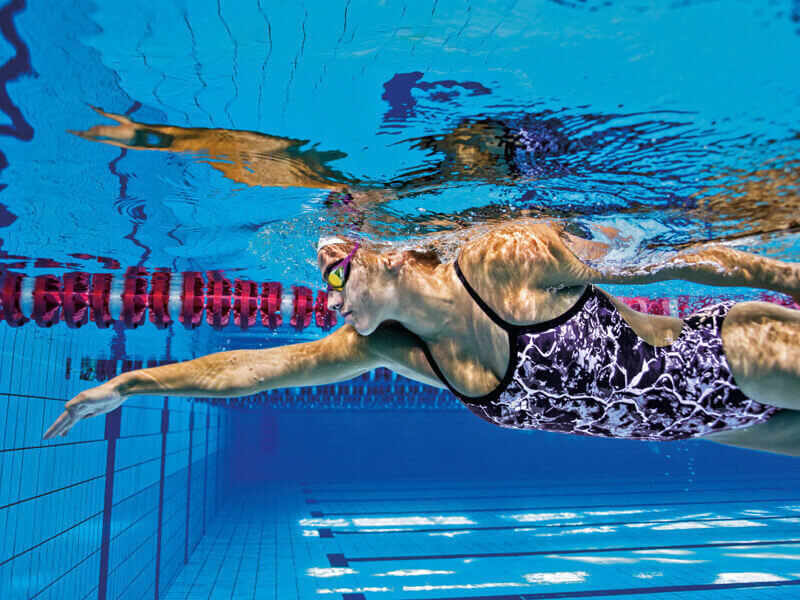
One of the hardest parts of swimming is getting your technique right. You can do all the HIIT in the world, get the best strength gains, and perform the cardio of an endurance athlete. But you still have to become a master of the nuances of your stroke — top-tier fitness just isn’t enough.
There’s so much information out there to help to improve the tiny discrepancies that might be driving you up the wall. You can also add training tools like flotation devices and snorkels to your workouts, which help you to focus your attention to specific parts of the body.
Read, watch, and learn, then train, train, and train some more. You’ll soon have the hand entry of an elite swimmer.
Check out Arena’s line of swimwear and equipment to assist you during your swims.
Written by:
Thomas Board
Tom is an outdoor and adventure travel writer and full-time firefighter based in Leeds, UK. He spends his free time summiting the mountains of Wales and wild swimming in the lakes of Snowdonia all year round.







